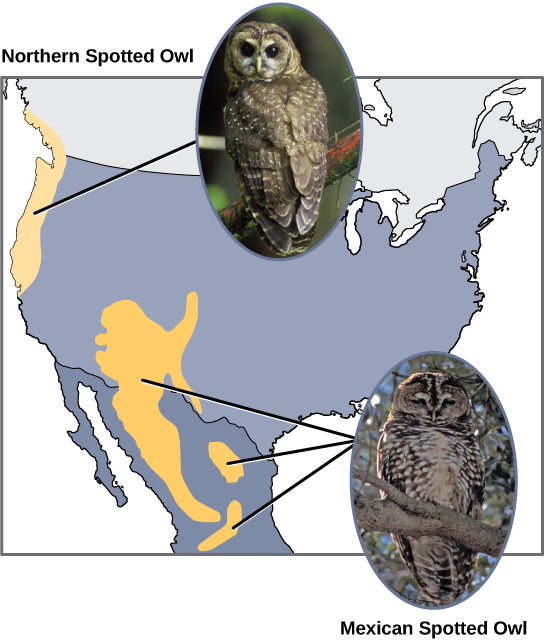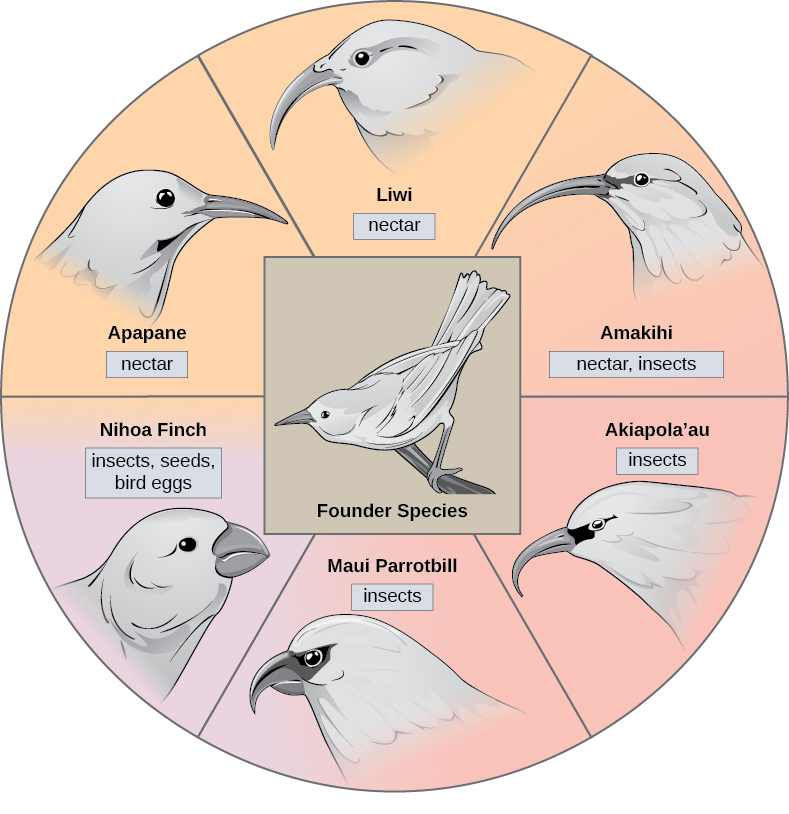| << Chapter < Page | Chapter >> Page > |

Additionally, scientists have found that the further the distance between two groups that once were the same species, the more likely for speciation to take place. This seems logical because as the distance increases, the various environmental factors would likely have less in common than locations in close proximity. Consider the two owls; in the north, the climate is cooler than in the south; the other types of organisms in each ecosystem differ, as do their behaviors and habits; also, the hunting habits and prey choices of the owls in the south vary from the northern ones. These variances can lead to evolved differences in the owls, and over time speciation will likely occur unless gene flow between the populations is restored.
In some cases, a population of one species disperses throughout an area, and each finds a distinct niche or isolated habitat. Over time, the varied demands of their new lifestyles lead to multiple speciation events originating from a single species, which is called adaptive radiation . From one point of origin, many adaptations evolve causing the species to radiate into several new ones. Island archipelagos like the Hawaiian Islands provide an ideal context for adaptive radiation events because water surrounds each island, which leads to geographical isolation for many organisms ( [link] ). The Hawaiian honeycreeper illustrates one example of adaptive radiation. From a single species, called the founder species, numerous species have evolved, including the eight shown in [link] .

Notice the differences in the species’ beaks in [link] . Change in the genetic variation for beaks in response to natural selection based on specific food sources in each new habitat led to evolution of a different beak suited to the specific food source. The fruit and seed-eating birds have thicker, stronger beaks which are suited to break hard nuts. The nectar-eating birds have long beaks to dip into flowers to reach their nectar. The insect-eating birds have beaks like swords, appropriate for stabbing and impaling insects. Darwin’s finches are another well-studied example of adaptive radiation in an archipelago.
Click through this interactive site to see how island birds evolved; click to see images of each species in evolutionary increments from five million years ago to today.
Can divergence occur if no physical barriers are in place to separate individuals who continue to live and reproduce in the same habitat? A number of mechanisms for sympatric speciation have been proposed and studied.

Notification Switch
Would you like to follow the 'Concepts of biology' conversation and receive update notifications?